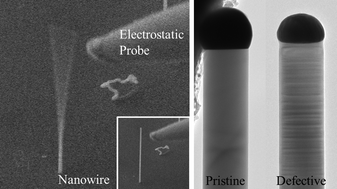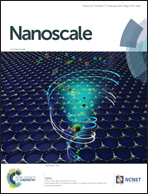In situ mechanical resonance behaviour of pristine and defective zinc blende GaAs nanowires†
Abstract
The structural versatility of semiconducting gallium arsenide (GaAs) nanowires (NWs) provides an exciting direction for the engineering of their mechanical and dynamic properties. However, the dynamic behaviour of GaAs NWs remains unexplored. In this study, comprehensive in situ mechanical resonance tests were conducted to explore the dynamic behaviour of pristine and defective zinc blende GaAs NWs. The effects of stacking faults (SFs), amorphous shell, NW tapering and end-mass particles were investigated. The quality factors (QFs) of the GaAs NWs were found to be predominately governed by surface effects, which increased linearly with the volume to surface area ratio. Interestingly, SFs were found not to influence the QFs. To extract the mechanical properties, the Euler–Bernoulli beam theory was modified, to incorporate the core–shell model, NW tapering and end-mass particles. It was found that the core–shell model accurately predicts the mechanical properties of the pristine GaAs NWs, which exhibit significant stiffening at radii below 50 nm. Conversely, the mechanical properties of the defective NWs were influenced by the presence of SFs, causing a wide variance in the Young's modulus. Apart from establishing an understanding of the resonance behaviour of GaAs NWs, this research provides guidance for the design of NWs for their applications in dynamic nanomechanical devices with tailorable dynamic properties.



 Please wait while we load your content...
Please wait while we load your content...